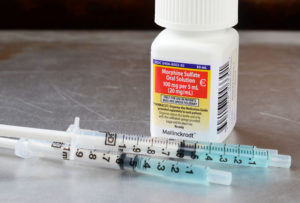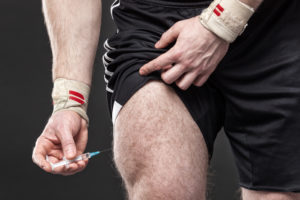Anti Drug Ads Don’t Work in Preventing Addiction
Table of Contents
 Think back to the 1990s. If you’re old enough, you’ll recall the Public Service Announcement (PSA) series “This is Your Brain on Drugs.” These PSAs repeatedly aired on channels aimed at teenagers like MTV. Their goal was to frighten teens so they would stay off of drugs. The thought behind the series was that informing the teens of the dangers of drugs would ensure that they would fully understand the inherent risk of becoming addicted. Preventing addiction was believed to be a function of fear.
Think back to the 1990s. If you’re old enough, you’ll recall the Public Service Announcement (PSA) series “This is Your Brain on Drugs.” These PSAs repeatedly aired on channels aimed at teenagers like MTV. Their goal was to frighten teens so they would stay off of drugs. The thought behind the series was that informing the teens of the dangers of drugs would ensure that they would fully understand the inherent risk of becoming addicted. Preventing addiction was believed to be a function of fear.
One of the best remembered PSAsin the series featured an off-camera announcer cracking an egg into a bowl while exclaiming, “This is your brain,” Next, he cracked an egg into a hot frying pan and informed viewers, “This is your brain on drugs,” as the egg ominously popped and sizzled.
There’s no doubt that this was an effective demonstration. The question remains, though: did it prevent teenagers from abusing drugs?
Are You Ready To Move Past Your Addiction?
(877) 633-0053
“Scare Tactics” Defined
Scare tactics are the application of inciting fear to teach or shape a behavior. Think back to your own childhood for examples.
“That pond is filled with water moccasins.” This translates to “Don’t go swimming.” Did you dive in anyway? As a young child, you probably did not because scare tactics are more useful for younger children with less advanced ability to process thoughts. However, by the time you were a teenager, you were probably diving in every chance that Mom turned her back.
So, do they work in preventing addiction? Well, only part of the time.
Scare tactics to help teens learn about the dangers of drug and alcohol abuse involve focusing on only the worst and most extreme outcomes. The goal is to scare children away from drunk driving by making them view scary images of cars that have collided with overpasses or trees, weeping siblings and parents, and teenagers lying on a bed in a comatose state. This tactic is often combined with the “survivor” tactic. This is when schools bring in a guest speaker who shares a firsthand account of how drugs or alcohol destroyed their life. They often invite speakers who have been homeless, been jailed for prostitution, or became infected with HIV or other illnesses, before getting help for addiction.
The message is made crystal clear to the teenagers. Drugs are bad. If you do drugs or drink alcohol, this could become your fate, too. That’s the goal of such groups who are focused on preventing addiction.
The Story of Drug Prevention and Scare Tactics
One of the first movies made to scare people off drugs came out in the 1930s. EntitledReefer Madness, it was re-released in the 1970s. It developed an almost cult following of college kids but for all the wrong reasons. Today, college students laugh at the absurd storyline, which relates a cautionary tale about nice high school students who became insanely violent due to marijuana.
Scare tactics reemerged in the 1960s during the rise of LSD abuse among the younger anti-Vietnam War subculture. The Manson Family, and their murderous spree, sprang from their use of LSD. The general public throughout the nation became outraged as accounts of the murders made their way to the nightly news. How could acid turn nice those lovely American women into psychopaths?
These are dangerous tactics, and they only effect people who are already against drug use. They scare the devil out of parents but have little affect on teens. Preventing addiction is a matter of not fear, but knowledge.
Here’s another example from the “This is Your Brain” PSA series. One message featured a slice of Swiss cheese. It was aimed at parents, not-so-subtly demonstrating to them how ecstasy (Molly, MDMA) carved crevices into their teenagers’ young brains. I still remember that PSA when I visit a deli counter. In fact, my mother reminds me of the danger of ecstasy every time I buy tickets to a concert. However, at the time the PSA aired, I (then a teen, of course) barely noticed it.
Scare Tactics Won’t End Drug or Alcohol Addiction
 While scare tactics might work for some teens and college-aged adults, they are hardly effective as a deterrent from experimenting with drugs and alcohol. Once someone has tried them, scare tactics become irrelevant. They don’t deter them from continuing to use. In this way, they do nothing in preventing addiction.
While scare tactics might work for some teens and college-aged adults, they are hardly effective as a deterrent from experimenting with drugs and alcohol. Once someone has tried them, scare tactics become irrelevant. They don’t deter them from continuing to use. In this way, they do nothing in preventing addiction.
After all, once someone realizes that Molly doesn’t literally melt holes into their brain, the threat is disarmed. All that happens is that they will question everything you tell them. That doesn’t mean that the Swiss-cheese message of drug ruining lives is not true, it’s just that they can no longer identify with the visual.
Have you ever met a teenager? They are complicated creatures, and what scares one might inspire another to try something new. They love that danger.
Teenagers will seek out ways to rebel. It’s thought of as a rite of passage amongst teens, and there’s nothing abnormal about that. This means that extreme scare tactics with horrific images will not prevent alcohol or drug use. Instead, you will find that the tactics might actually provide fodder for jokes or incite rebellion among teens. Remember, teenagers believe that they are invincible and they don’t think anything bad will happen to them.
Instead of scare tactics showing teens bleeding at the scene or a car wreck, share recovery stories about people cobbling their families back together. It will be more real to them. Our Addiction and Family Series is the perfect resource for helping people, even surly teenagers, in understanding that addiction is a difficult fight.
Yes, drugs ruin lives, but those lives can be repaired. Preventing addiction is more effective through love than through fear.
Enroll In A Rehab Program Today
(877) 633-0053
Anna M. joined Find Addiction Rehabs with extensive experience in the field of addiction treatment. As a former Nurse Practitioner in Miami, she found her passion for addiction treatment when a family member was lost to his disease. With each article and resource, she hopes to save other families from experiencing the anguish of a loved one’s passing due to drinking or drugs.


